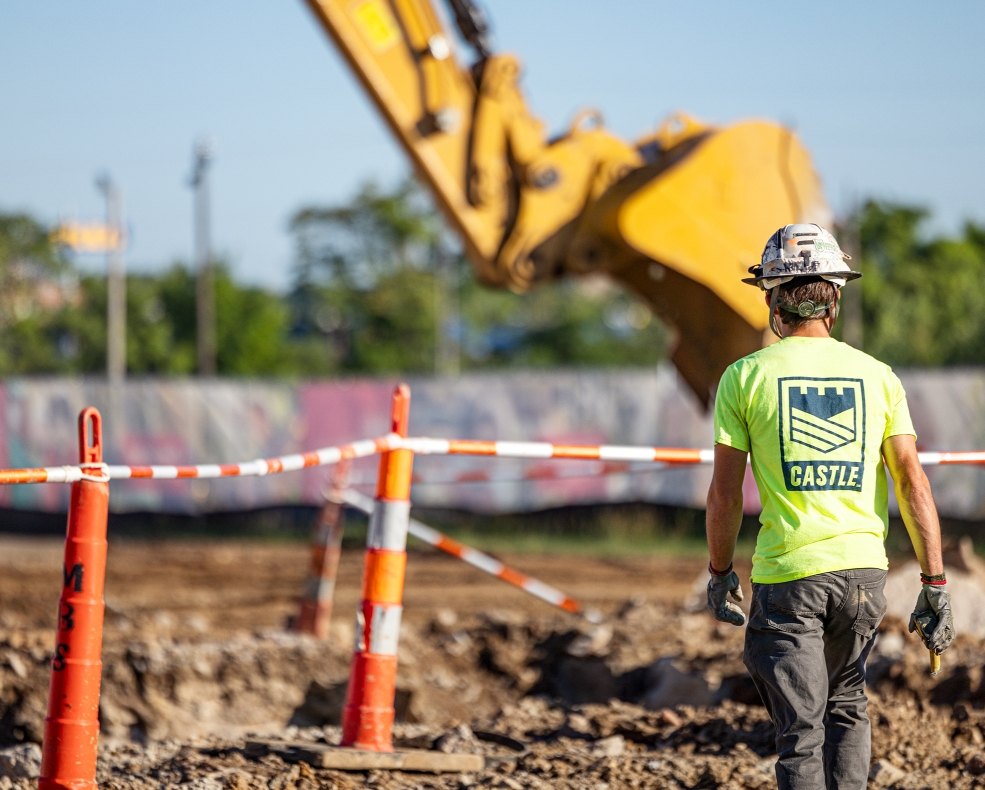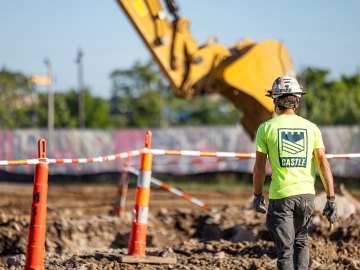All About Construction Site Development
Successful project outcomes start with a strong foundation. In construction, site development is critical in shaping a safe and efficient jobsite. Thorough site development ensures your project meets permitting requirements, delivers structural integrity to stand the test of time and has a plan that keeps the rest of the project on schedule.


First, What Is Site Development in Construction?
Site development is the work before the work. Construction site development involves testing and investigating the site to create a thorough site plan. This phase sets the tone for construction milestones by ensuring each crew can begin and finish on time.
Poorly implemented construction sites can create serious financial and safety risks to developers and owners, including:
- Delayed permits
- Liability exposure
- Safety violations
- Rework and missed deadlines
Read more: How New Construction Safety Technology Is Saving Lives
Important Elements of Construction Site Development
At Castle Contracting, we take an incremental approach to site development that utilizes a keen eye for detail and creates a safe working environment for future teams. Thorough due diligence is essential to learning the most about a site and making informed decisions. Performing surveys, soil testing, subsurface utility mapping, record research and more inform the state of the site so a site development team can design the most optimal plan that meets client expectations.
- The site survey
First, we firmly establish site boundaries with a survey. This allows us to verify property boundaries, set a precise building footprint and confirm the horizontal and vertical coordinates of the finished structure.
- Soil testing
Soil composition and compaction are critical to site integrity. Soil testing evaluates the viability of the site based on surface and subsurface soil composition, as well as environmental factors like heavy rains or flood risk. Type A soil is safe to excavate, while Types B and C are typically less stable. This step often happens alongside the site inspection.
- Site inspection
Also known as site investigation, in this step geologists follow up on earlier soil testing to evaluate rock formations and disposition near the proposed structure. Geotechnical and civil engineers test soil in a lab. Owners also usually perform Environmental Site Assessments to make sure groundwater and soils are safe. The data and results inform design and what is needed for both site and building design. The team also inspects utilities and investigates the presence of groundwater and other subterranean cavities that could impact surface integrity.
- Designing the site plan
Once there is a thorough understanding of the site, the completed work influences the details of the site plan. Created by contractors, architects and engineers, the site plan plots every important element of the site, foot-by-foot. It's the blueprint for the structure footprint, access roads and the placement of underground utilities. The site plan documents adherence to local and federal building guidelines. In many cases, regulators and local officials review the site plan alongside contractors to advise changes that will ultimately ensure compliance. Castle’s designers can provide an integrated approach to the site plan process by bringing design sensibility and constructability to the table.
- Site clearing
Once the project footprint has been established, and we’ve verified that the soil is safe for building, site clearing is the next step before construction can begin. Clearing a construction site involves considerable work above and below grade. The ground must be cleared of trees and debris, and sites generally need considerable earthmoving work to create the elevations required for building design. Work also includes inspecting and assessing existing underground utilities, which may need to be removed or redirected according to the project plan.
Trust the Process with Castle Contracting
Site development is nuanced and often an iterative process as the team works through due diligence and gathers new information to make design and project decisions. It is a critical preparation phase for a successful and safe project. Partner with an experienced site development contractor with the experience and resources to meet and exceed site development expectations. Contact us today to learn more or get your project’s construction started on the right foundation!

